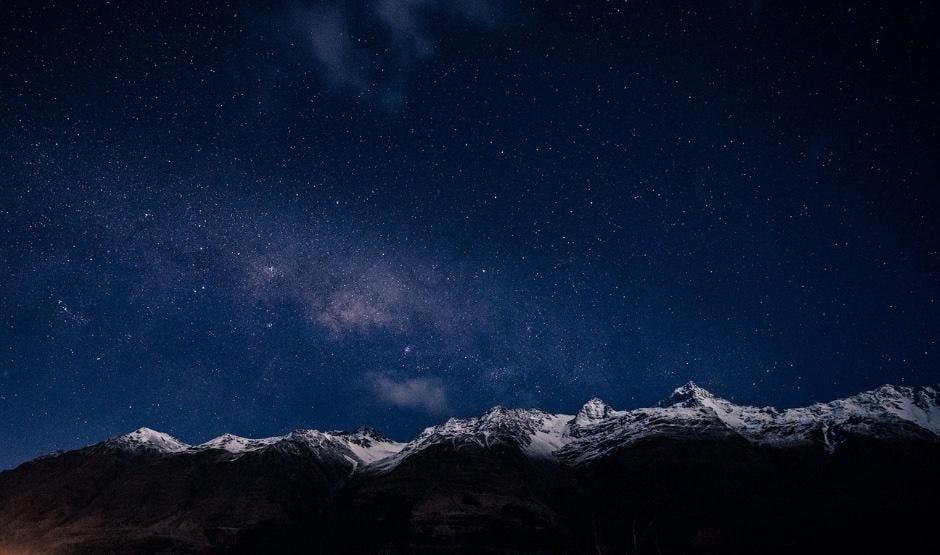A Starlight Sanctuary Emerges in New Zealand’s Southern Alps: Tāhuna Glenorchy Achieves Dark Sky Designation
New Zealand’s commitment to preserving its pristine night skies has reached a new milestone with the official certification of the Tāhuna Glenorchy Dark Sky Sanctuary by DarkSky International. This remarkable achievement marks the fifth such sanctuary in New Zealand and the 23rd globally, solidifying the nation’s position as a leader in dark sky conservation and bolstering its aspiration to become the world’s first Dark Sky Nation. Nestled within the breathtaking landscapes of the Southern Alps, Tāhuna Glenorchy offers an unparalleled opportunity to experience the cosmos in all its splendor. Its location along the astronomically significant 45th parallel further enhances its importance, granting it a privileged view of the highly anticipated 2028 Total Solar Eclipse. Remarkably, it is the only designated International Dark Sky Sanctuary positioned along the eclipse’s path, drawing global attention to this remote corner of the world.
The sanctuary encompasses a vast expanse of 200,000 hectares, stretching from Bennett’s Bluff to the northern reaches of Mount Aspiring National Park. This protected area overlaps significantly with the UNESCO Te Wāhipounamu World Heritage Wilderness, a region renowned for its exceptional natural beauty and iconic hiking trails like the Routeburn, Greenstone-Caples, and Rees-Dart tracks. This dual designation underscores the sanctuary’s commitment to both celestial and terrestrial preservation, safeguarding not only the dark night skies but also the diverse flora and fauna that call this area home. Visitors can now experience the wonder of traversing renowned trails by day, encountering the rare and reintroduced takahē bird at dusk, and then gazing upon the brilliance of an undisturbed Milky Way by night.
The realization of the Tāhuna Glenorchy Dark Sky Sanctuary is a testament to the dedication and perseverance of a small but passionate community. The Tāhuna Glenorchy Dark Sky Group, comprised of just 12 local residents spanning three generations, spearheaded the five-year grassroots effort that culminated in this prestigious designation. Their work encompassed a wide range of initiatives, from meticulous darkness measurements and nocturnal species studies to community education programs, stargazing courses, and the celebration of Matariki, the Māori New Year marked by the rise of the Pleiades star cluster. This achievement exemplifies the power of community-driven conservation and showcases the impact local efforts can have on a global scale.
The designation also extends to the townships of Glenorchy and Kinloch, nestled within the sanctuary’s boundaries. These communities are slated to join the International Dark Sky Places program as an International Dark Sky Community, mirroring the successful 2024 designation of the Kaikōura Dark Sky Sanctuary. This integrated approach reflects a holistic commitment to dark sky preservation, recognizing that minimizing light pollution benefits not only astronomical observation but also the health of ecosystems and the cultural heritage connected to the night sky. The combined efforts of the sanctuary and the communities within it create a comprehensive model for dark sky protection, offering a beacon of hope for other regions seeking to reclaim the beauty of their night skies.
Beyond its astronomical significance, the Tāhuna Glenorchy Dark Sky Sanctuary embraces a broader mission that encompasses cultural heritage and ecological responsibility. The sanctuary is actively engaging with Kāi Tahu, the local Māori iwi (tribe), to highlight the importance of Mātauraka Kāi Tahu, the indigenous astronomical knowledge interwoven with the stars. This ancestral wisdom, passed down through generations of navigators who traversed the vast Pacific Ocean, holds profound cultural meaning for the Kāi Tahu people. The sanctuary’s recognition of this cultural heritage adds another layer of significance to its designation, emphasizing the interconnectedness of the night sky, the land, and the people who call it home.
The establishment of the sanctuary is also poised to catalyze a new era of regenerative tourism in the region. Glenorchy is anticipated to become a prime destination for astro-tourists seeking sustainable and immersive experiences. The Queenstown Lakes region, a popular tourism hub, is embracing a shift towards slower, more ecologically conscious tourism, and stargazing offers a unique opportunity to engage with the natural world in a low-impact way. By attracting visitors who appreciate the beauty of the night sky and the importance of its preservation, the sanctuary can contribute to the economic vitality of the region while simultaneously promoting environmental stewardship. This symbiotic relationship between tourism and conservation is a model for sustainable development, demonstrating how protecting natural resources can also benefit local communities.














